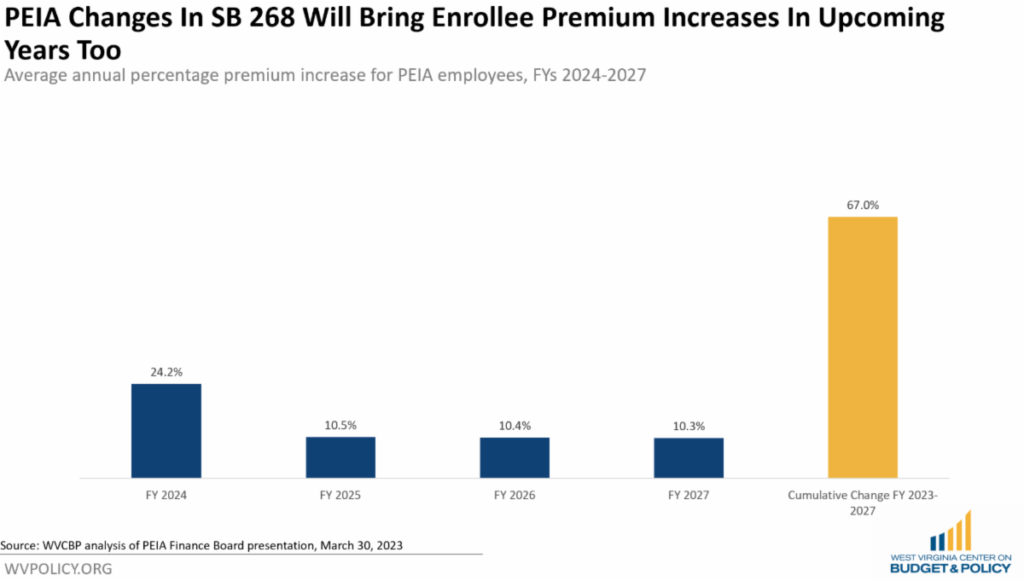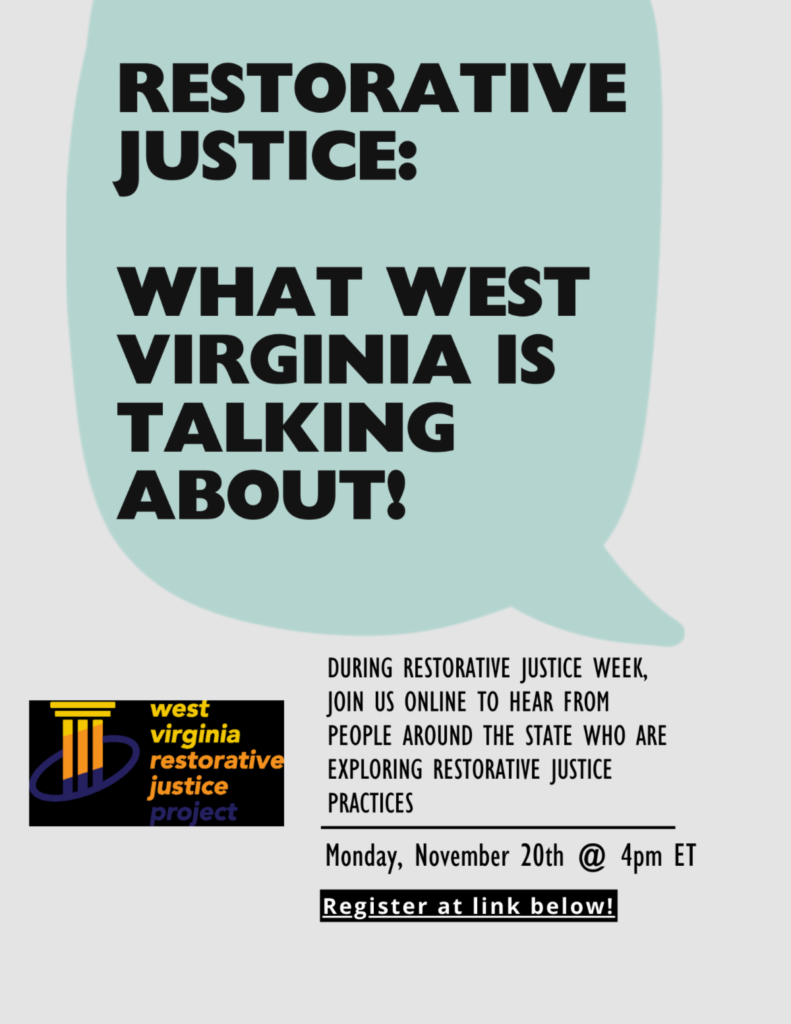For the first four months of FY 2024, West Virginia’s General Revenue collections are down $210.7 million compared to the same period in FY 2023, despite the state exceeding the fairly modest revenue estimates set by the Governor Justice administration in an effort to maintain a ‘flat budget.’
The combination of self-inflicted tax cuts and a collapse in severance tax revenue explain the revenue gap. Personal income tax collections are down $26.5 million compared to this time last year, while severance tax collections are down $306.3 million. Global factors remain the primary cause of low energy prices and, by extension, the tanking of severance tax revenues, and are out of the West Virginia Legislature’s control. However, a lack of growth in income tax revenues to offset the expected decline in the severance tax is the direct result of income tax cuts passed earlier this year by the Legislature. Those tax cuts were enacted despite widespread understanding that personal income tax collections are a far more stable source of income than volatile severance tax collections, which were responsible for about 40 percent of the FY 2023 ‘surplus.’
After adjusting for inflation, the FY 2024 appropriated budget is $591.2 million less than FY 2019 expenditures, meaning that the state’s ‘flat budget’ is actually a declining one, leaving state agencies and programs with fewer resources compared to five years ago.
While revenues are decreasing, the state is facing looming, already obligated costs that will impact the base (General Revenue) budget in upcoming years, even before any new laws with price tags are enacted in upcoming legislative sessions.
These costs include:
With last year’s surplus generated by severance tax collections proving temporary, there is little room remaining in the budget for these new, ongoing spending obligations, particularly as permanent tax cuts take effect. The state now faces $670 million in additional spending obligations as revenues are already falling $210 million behind–and this is before beginning to account for multiple state crises driven by underfunding.
With looming costs and shrinking revenues, West Virginia faces a potentially challenging budget future. The revenue surpluses used to justify expensive tax cuts are starting to evaporate, and the state will soon start to feel the squeeze of the flat budgets.
Read Sean’s full blog post.

EIA premiums increased by nearly 25 percent this year as a result of legislation passed during the West Virginia 2023 Legislative Session. Now, these premiums are likely to increase by another 10 percent in the coming year. A recent article, including insight from WVCBP executive director Kelly Allen, provides further details on the impact this will have on public sector workers and the effort to fill vacancies across state agencies. Excerpt below:
PEIA’s Finance Board is going around the state for conversations about what many public employees will likely consider bad news, a 10% premium increase for the coming year.
That’s on top of a 24% increase for state employees and educators instituted for the current year — changes that have gone hand-in-hand following legislation mandating that the insurance plans snap back to an 80-20 cost split between the government employer and insured employees.
Organizations that represent workers have acknowledged they’re aware that people covered by the Public Employees Insurance Agency have not experienced the same kind of premium increases as private sector workers over the past few years. Still, the back-to-back cost bumps represent sticker shock, leaders of those organizations said.
The PEIA Finance Board is proposing:
The finance board is expected to take a final vote on the plan in December.
The premium increases are happening in large part because earlier this year the Legislature passed a multi-faceted bill in response to financial strains, making it mandatory that PEIA conform to an 80-20 cost split between the employer and employees.
That has been the cost ratio set in state code, but it got out of whack over the past few years after the governor and the Legislature established a reserve fund that PEIA could use to cushion its costs.
The West Virginia Center on Budget & Policy outlined the multi-year increases in advance, noting that most public discussion until now had focused on the big, first-year bump.
“It’s hitting employees and will hit employees for the next several years,” said Kelly Allen, executive director of the center.
“It was surprisingly not a topic of discussion during the legislative session that I heard much. The Legislature talked about how the 2023 premium increase was going to impact the state budget and state employees, but didn’t talk much about going ahead and how that might continue to impact enrollees and the state budget going forward.”
Allen noted that state officials have described offsetting the increased insurance costs with pay raises. Gov. Jim Justice, a couple of weeks ago, said that is his hope again this year.
Allen said insurance costs, lagging pay and shortages in key public sectors are all intertwined.
“PEIA and health insurance is part of the benefits package that people consider when they’re taking a job,” she said. “We know that across state agencies, pay is often lower than it would be in a neighboring state for a similar job. It’s often lower than it would be in the private sector.
“And as we talk about difficulty filling vacancies across state agencies, anything that makes health coverage more expensive could potentially make the job a little bit less appealing. In recent years, state employees have gotten boosts in pay from the Legislature but now that’s coming with an increase in health coverage costs.”
Read the full article here.
Read Kelly’s blog post detailing the multi-year impact of the enacted PEIA legislation here.

Last month, the WVCBP published a report detailing why West Virginia needs to address the root causes of family hardship in order to improve child welfare outcomes in the state. A recent article, including comment from WVCBP executive director Kelly Allen, highlights some findings and recommendations from our October report. Excerpt below:
West Virginia has the highest rate of foster children in the nation, and advocates are again calling for more help. Some have called the foster care system a crisis, and it’s certain to be one of the top three issues when the legislature convenes in January.
For every 1,000 children in West Virginia, 13 of them are in foster care. That makes the Mountain State number one in the nation, and in fact, the rate here is twice as high as the second-place state.
The West Virginia Center on Budget and Policy authored this study. It recommends creating a state child tax credit for kids, just like the federal government does; providing more SNAP and TANF benefits so low-income families get food and cash assistance; and providing more substance abuse treatment for parents before their children are placed into foster care.
“We offer a lot of resources to kids in foster care, and rightly so. But until we extend those same resources to biological families and address issues up front, before families are in crisis, it’s going to be hard to get our numbers in line with the rest of the country,” said Kelly Allen, Executive Director of the West Virginia Center on Budget and Policy.
There are ongoing calls to hire more Child Protective Services workers and pay them better. But the shortage continues. The legislature passed two laws to address those issues this year, but foster and adoptive care advocates say it’s still not enough.
As high as West Virginia foster care rates are, the study says the numbers are even worse for families of color.
Read the full article here.
Read our full report here.
Read our accompanying blog post and fact sheet series detailing how expanding safety net programs can help address West Virginia’s foster care crisis here.

The third annual West Virginia Black Policy Day, hosted by Black by God The West Virginian and the West Virginia Black Voter Impact Initiative, is scheduled for February 7, 2024. In addition, the event organizers are offering a series of educational webinars leading up to the event.
October’s webinar provided valuable insights about Legislative Interims and Black infant and maternal health policies, and November’s webinar gave a preview of the 2024 Black Policy Agenda. Both offered actionable strategies and resources for folks to make an impact in their communities.
You can watch the October webinar recording here and the November webinar recording here.
You can register for next month’s webinar (taking place on December 6 at 7pm) here.

International Restorative Justice Week is just a month away!
Please join fellow West Virginians via Zoom on Monday, November 20th from 4pm – 5pm EST for a webinar and discussion about restorative justice in the Mountain State. Following a welcome from Honorable Judge Michael Aloi and WV Restorative Justice Project Coordinator Emily Neely, participants will hear from people around the state who are using restorative justice approaches in schools, recovery homes, drug courts, communities, and more. There will be an opportunity for Q&A, as well as an announcement for a restorative justice conference in Summer 2024 at Wesleyan University.
Register for the free webinar here.

The WVCBP’s Elevating the Medicaid Enrollment Experience (EMEE) Voices Project seeks to collect stories from West Virginians who have struggled to access Medicaid across the state. Being conducted in partnership with West Virginians for Affordable Health Care, EMEE Voices will gather insight to inform which Medicaid barriers are most pertinent to West Virginians, specifically people of color.
Do you have a Medicaid experience to share? We’d appreciate your insight. Just fill out the contact form on this webpage and we’ll reach out to you soon. We look forward to learning from you!
You can watch WVCBP’s health policy analyst Rhonda Rogombé and West Virginians for Affordable Health Care’s Mariah Plante further break down the project and its goals in this FB Live.
